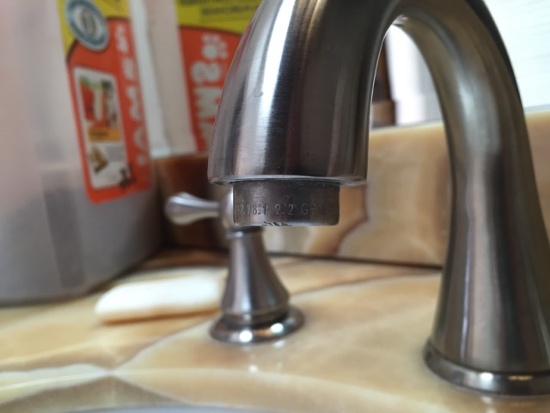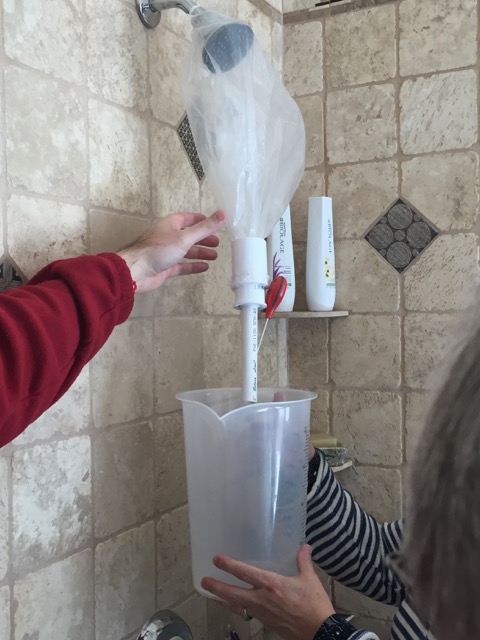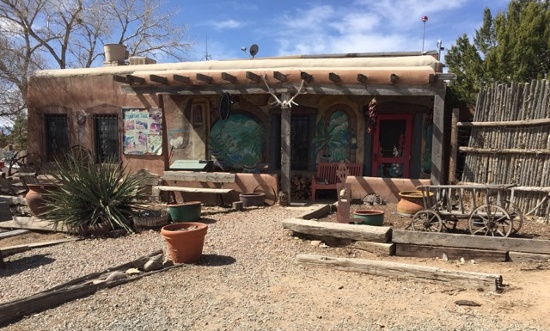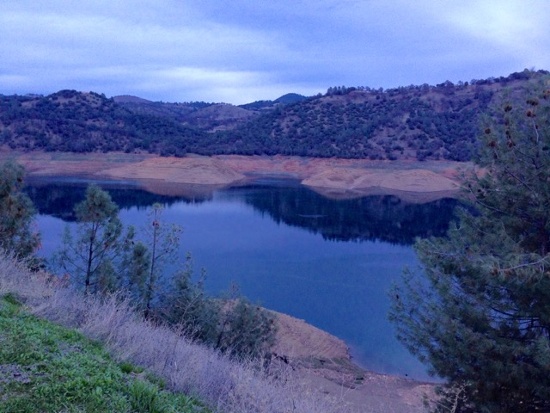The Water Efficiency Rating Score (WERS) Launches

The Green Builder Coalition has been working hard on their Water Efficiency Rating Score — the WERS — for homes. The inaugural WERS training happened in Santa Fe, New Mexico in March. I was in that class, and I learned a lot. Now the program, which has been in development for the past couple of years, is ready for prime time.
The Green Builder Coalition has been working hard on their Water Efficiency Rating Score — the WERS — for homes. The inaugural WERS training happened in Santa Fe, New Mexico in March. I was in that class, and I learned a lot. Now the program, which has been in development for the past couple of years, is ready for prime time.
How the program works
The WERS is a way to put a number on a home’s water efficiency similar to the HERS Index for energy efficiency. It’s a water use modeling tool that allows you to compare one house to another. You have to put in all the data for a home’s water use, and the tool gives you a number, generally between 0 and 100. As with the HERS Index, lower is better. A WERS of zero means you’ve got a net zero water house. You have to capture rainwater to get there.
One of the things we learned in the class is how to measure structural waste. That’s the amount of water that comes out of a faucet or shower while you’re waiting for the hot water to arrive. The photo below shows the clever equipment we used in the class to measure it for a shower. It’s a Ziploc bag, a piece of PVC pipe with a couple of fittings to hold the bag, and a measuring cup. This setup works really well!

When you’re doing a field inspection, you go around and fill out the checklist. The screenshot below shows part of the checklist for indoor water efficiency. The first thing you do is put a pressure gauge on a faucet, turn off the water supply to the house, and see if the pressure drops. That tells you if you have leaks. (Of course, you have to make sure no one flushes a toilet or turns on any water during the test.)
What really distinguishes WERS, though, is that it includes both indoor and outdoor water use. That’s not true for HERS and energy. A HERS Index, for example, doesn’t include the energy use of swimming pools, hot tubs, snowmelt systems, or garage heating and cooling. And those can be huge!
The WERS tool generates a score for indoor water use, outdoor water use, and a combined score for both. Another great thing about WERS is that you get credit for capturing rainwater and greywater. This is similar to lowering your HERS Index by having photovoltaics on the roof of your house contributing to your energy supply.
Highlights of my WERS training
I’ve been traveling to Santa Fe each year of the past three for various events. It’s a great community with great home builders, HERS raters, and an active Passive House contingent. Plus I get to hang out with a guy with a woman’s name (Kim Shanahan), see my trainer friend Amanda Hatherly (who only lives in places that start with “New”), and go to lunch at fantastic roadside diners (below) with HERS rater Steve Onstad.

Let’s talk about water. That was my reason for taking to the WERS class after all. They don’t have much of the stuff in New Mexico, as you might surmise from the photo above. But it’s not just a dry climate thing. Water’s a huge issue in Atlanta, too, where we get more than 50 inches of rain each year. (The state of Georgia got sued by Alabama and Florida a while back for using water they thought should have flowed down to them.)
In the WERS class, the trainers gave us background info on water use, codes, and laws. Colorado, for example, is the only state where it’s illegal to capture rainwater. New Mexico, on the other hand, is the only state that has a law making surface water and groundwater equal.
The instructors were David Dunlap and Doug Pushard. Those two guys have a wealth of knowledge on water efficiency. Dunlap is a builder and covered the indoor water use material. Pushard has a rainwater harvesting company and helped us understand outdoor water use.
The indoor water efficiency was all pretty straightforward and easy for me. The outdoor water efficiency wasn’t so easy. Let me just say that you might want to have someone around who knows plants if get into doing WERS. In determining the outdoor water use, you have to classify the plants as low, medium, or high water use.
One product the instructors told us about really caught my eye. Behavioral waste, as opposed to the structural waste, is the water that gets wasted after the water is already hot when someone turns on the water in the shower and goes away for 10 minutes. Evolve Technologies has products that can reduce that waste significantly. When you turn on the faucet or the shower, it flows at full capacity until the water gets hot. Then it slows to a trickle until the person is ready to use it.
Overall, the WERS training was fantastic. It’s a powerful tool that can help us solve problems. The class I attended in Santa Fe sold out, so they’ve scheduled another one for June, also in Santa Fe. There may be one in Atlanta this summer, too.

I think you’ll be hearing more and more about WERS. Water is a huge issue. The drought in California, for example, is having a huge effect on people and businesses there. The WERS is a great tool to help as we get more serious about water conservation.
Related Articles
New Mexico Green Builders Create Water Efficiency Rating System
How to Install a Branched-Drain Greywater System in a Green Home
NOTE: Comments are moderated. Your comment will not appear below until approved.
This Post Has 8 Comments
Comments are closed.

The problem is the way water
The problem is the way water is billed. Most of a typical “water bill” is full of taxes/fees, very little is for the water itself. Consumers get frustrated when all their water conservation efforts have a minimal effect on the final bill.
I live in Vancouver, a very
I live in Vancouver, a very wet climate, yet each year we have water rationing partly due to the mindless proliferation of lawns. If you know how this idea can be supported, please advise. This is what I wrote to the Metro area (of 2,400,000 people) recently.
Does Vancouver region have a program designed to save water, greenhouse gas emissions, VOX pollution, fertilizer pollution, insecticide pollution, herbicide pollution and noise pollution by discouraging lawns?
Every spring, I hear a chorus of two stroke lawn mowers, edge trimmers, leaf blowers and hedge trimmers ripping the quiet as we move towards summer.
Surely Vancouver would be well served to encourage the elimination of decorative lawns in favor of water retaining ground cover plants that would not require the endless chorus of two stroke engines to maintain.
I believe lawns get installed without much thought to whether it has any value beyond being a visual green strip. Discouraging lawns would go long ways to curing the ails described in my subject line. If not a program already, how can this be moved forward?
Agree,we should not be
Agree,we should not be wasting water, a testing program (WETS), would help because we don’t get what we expect we get what we inspect!
Bob:
Bob:
You’re exactly right. Water is very undervalued. I live in the Midwest, where most don’t care about water conservation at all.
That’s why we’ve been looking to increase the ROI for the property owner through incentives (tax credits, reduced fees or permit review times) and through our WERS – Manufacturer program, where people pursuing a WERS for their project can purchase water efficient products at a discount. Evolve Technologies (cited above) was the first manufacturer to sign up for that program, and there are more that will be announced soon.
Mike Collignon
Green Builder Coalition
Alison- thanks for the great
Alison- thanks for the great write up of the WERS program and training. All of us involved with its development are extremely excited about the program moving forward and articles such as yours help raise its profile out there in the “Real world”.
Planting TREES goes a long
Planting TREES goes a long way to conserving water, and its something that’s practical for most homeowners. Water requirements for lawns in the shade are MUCH less than those in full sun.
Reduced fixed monthly fees on
Reduced fixed monthly fees on peoples water bills, increase cost of water. Cities/Water companies say “conserve water”, yet don’t change their pricing structure.
Saving 500 gallons per month with efficient fixtures pales in comparison to the effect of shorter showers and less lawn watering. Only when consumers can see the effect of their conservation efforts in their water bill will they be motivated.
California, which is in it’s
California, which is in it’s fifth year of drought, has over 100 proposed bills on the floor about water conservation/efficiency and water supply/planning.
In India, which has only been in severe drought for the last two years,people are dying of heatstroke and dehydration whole waiting in lines for water. 85% of the drinking water in India comes from aquifers. But if you have read “Plan B” by Lester Brown you know that the worlds aquifers are being depleted and will run out by 2025.
I agree with Colin that lawns are a foolhardy waste that should be abolished. Additionally, we should all be looking around our properties and finding ways we can augment our own water supply against the days of rationing and regulations that is coming. We must protect our rights to harvest rainwater, and we must do all we can to conserve what water there is. We must start doing this last year.
Dr. John Todd of Ecological Designs (formerly The New Alchemy Institute) has developed a wonderful resource for turning grey and even sewage water into potable drinking water using natural biological filters. His work around the globe treating the filthiest, most dangerous waterways with floating biological filters is astounding and worth looking into.
Let’s put water at the top of our agenda. After all, we can knit sweaters to keep us warm, but we can’t survive more than three days without water.